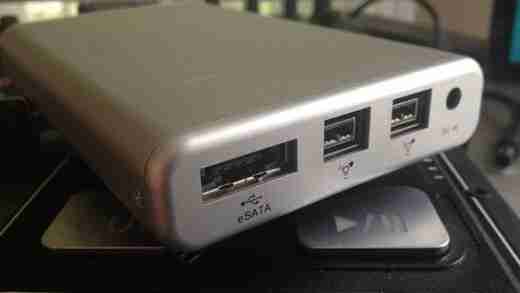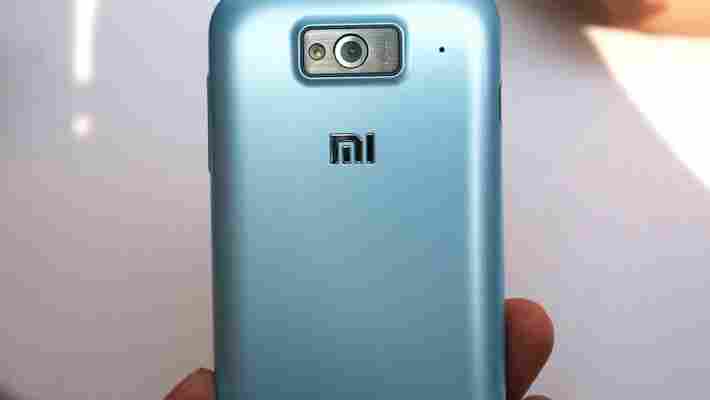There’s certainly no shortage of portable hard drives on the market these days. So justifying a price tag of up to $270 means that WiebeTech’s ToughTech mini-Q better be something special. Fortunately, it’s special indeed, but much more because of the enclosure than the drive inside of it.

First, let’s talk about the drive options. You can get the mini-Q with your choice of hard drive, in sizes of 250, 500 or 750 GB. These aren’t anything out of the ordinary, other than the fact that they’re a 2.5-inch drive spinning at 7200 RPM. Speedy, yes. My review unit came equipped with a Hitachi-branded drive that retails for around the $80 mark.
But you can also get the mini-Q without a drive. You’ll save yourself a few bucks by adding your own, but convenience may be worth the cost. That’s up to you.
Now on to that enclosure. Around the outside you’ll see two Firewire 800 ports, and a combo USB/eSATA port, then a DC in jack. The rest of the enclosure is sleek, with only a power/activity light gracing the other end. It’s crafted of thick aluminum, with the endcaps formed of plastic. The only other hole is for a Kensington lock, which connects directly to a metal ear on the inner tray.
You’ll notice, in the image above, that there are rails that run the length of the enclosure. These correspond to the slots on the side of the adapter tray, acting as a lock to keep the drive in what is essentially a floating state inside of the enclosure. The bottom of your drive will be mounted to the tray, but then there’s plenty of top and bottom clearance that allows your drive to stay cool.
The real magic of the mini-Q however is in the adapter that holds the drive. While SATA to USB adapters are nothing new, I’ve not seen an adapter that does Firewire (800, but 400 works too), eSATA and USB in a single unit. Usually they require plugging and unplugging, which leads to degradation of the SATA connector on the drive. To top if off, WiebeTech uses the Oxford 934 chipset to mange the whole thing, a piece of technology that makes the transfer process blazingly fast.
What I love about how WeibeTech packages the mini-Q is that it comes with literally everything that you’ll want. eSATA cables, Firewire cables, USB cables, a power adapter…heck, there’s even a screwdriver for taking the thing apart and using it to mount your own drive.
As for performance, it’s really a matter of the speed of drive that you choose to buy, plus what connection you’re using. What’s great about the setup is that, with dual Firewire ports, you can choose to daisy-chain the drives. I’ve transfered to and from the drive numerous times in my testing and, as you’d expect, gotten great speeds. I won’t get into the super-geeky specifics, but the drive runs fast.
The short version of this story? The mini-Q is a small enclosure with huge speed and even bigger functionality. At $120 it’s no bargain-basement piece of technology, but it’s worth every penny and more for what it provides.
➤ WiebeTech ToughTech mini-Q
Red hot: Latest smartphone from China’s Xiaomi sells its 200,000-unit launch batch in 30 minutes
There’s more proof of the unrelenting demand for Xiaomi’s mobile phones in China this morning after the popular smartphone maker saw its latest device — the $236 (RMB 1,499) Mi-One S — sell out of an initial batch of 200,000 units in just 30 minutes, with over 1 million additional reservations left to fulfill.

The Mi-One S features an upgraded dual-core 1.7Ghz processor, a 2-megapixel front camera and an improved 8-megapixel rear camera. Over 3.5 million units of the first-generation Mi-One were sold, making it the third-most popular Android phone in China last quarter, according to one analysis.
Shortly after the handset went on sale, the company tweeted that it had sold out of its first batch. Xiaomi has adopted a unique strategy of releasing waves of its phones on its website as they’re produced. It revealed earlier this week that it had received a total of 1.3 million preorders for the Mi-One S.
Xiaomi has drawn comparisons to Apple, and the naming scheme of the Mi-One S, which resembles the iPhone 3GS and iPhone 4S, isn’t likely to dispel the connection. The company has even attracted an energetic user base that rivals Apple’s own fans.
Last week, Xiaomi unveiled its Mi-Two smartphone to a standing ovation from its customers. The quad-core handset, which will hit the market in October, will be one of the first Chinese phones to ship with Android 4.1 Jelly Bean and is being sold at an aggressive below-cost price of $315 (RMB 1,999).
For now, Xiaomi’s phones are only sold in mainland China, but the company has hinted that it plans to expand overseas. With an influx of $216 million from a funding round earlier this year, it looks to have quite the runway lined up for itself.
Images via TNW, Xiaomi
Samsung Smart TV announces partnership with Angry Birds
Today during its CES press conference, Samsung announced that its Smart TV line will exclusively partner with the Angry Birds franchise, bringing new content to compliment its games to homes worldwide.

The partnership will bring all new digital shorts featuring the popular characters of the Angry Birds games to the TV. The content will be free, and is a huge partnership for both companies. By doing an exclusive deal with Angry Birds, Samsung keeps its competitors away from the series, namely Apple.
The company also announced its plans for a smarter Smart TV in 2011, and shared that it currently sells 2 TVs per second , globally.
Rovio has proven once again that distribution is the key to success.
Be sure to read all of our CES coverage here .
